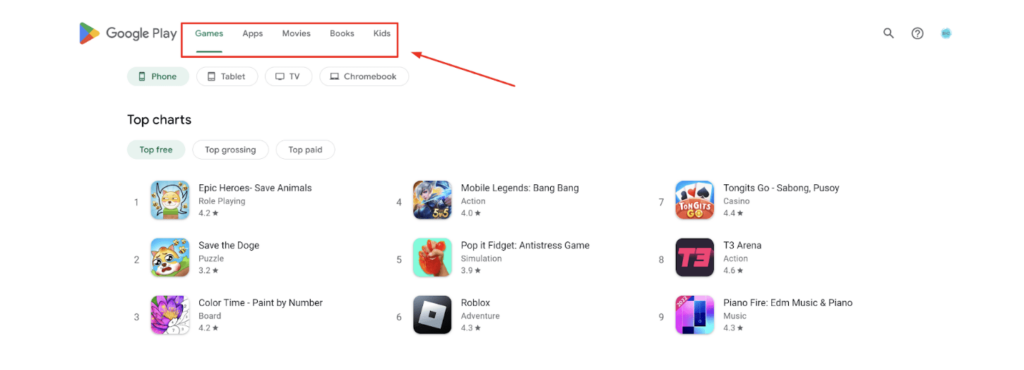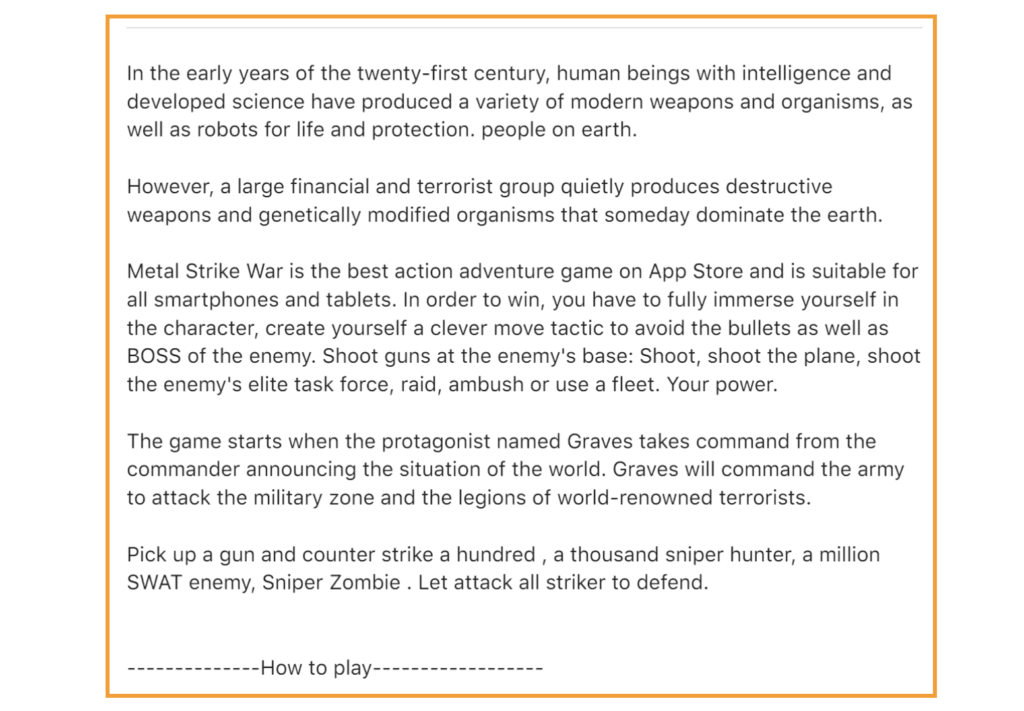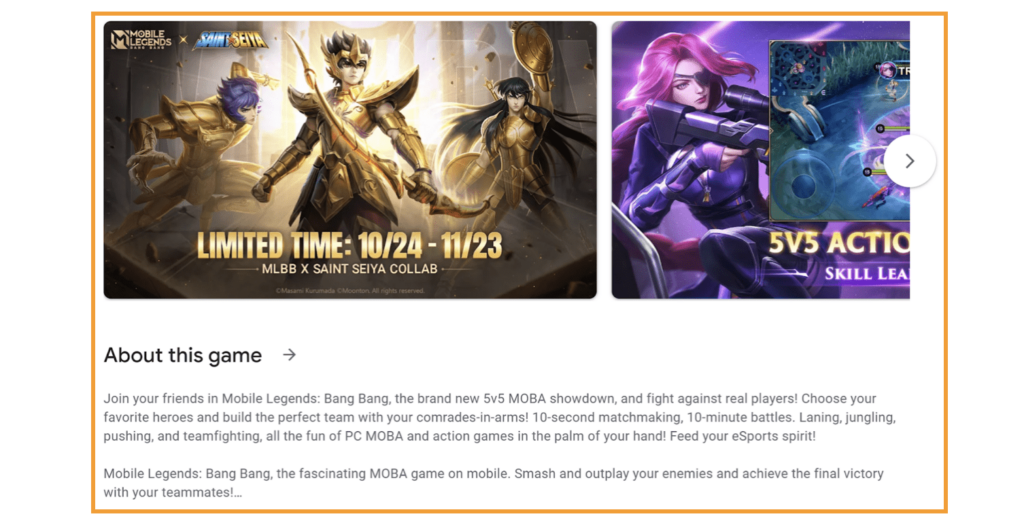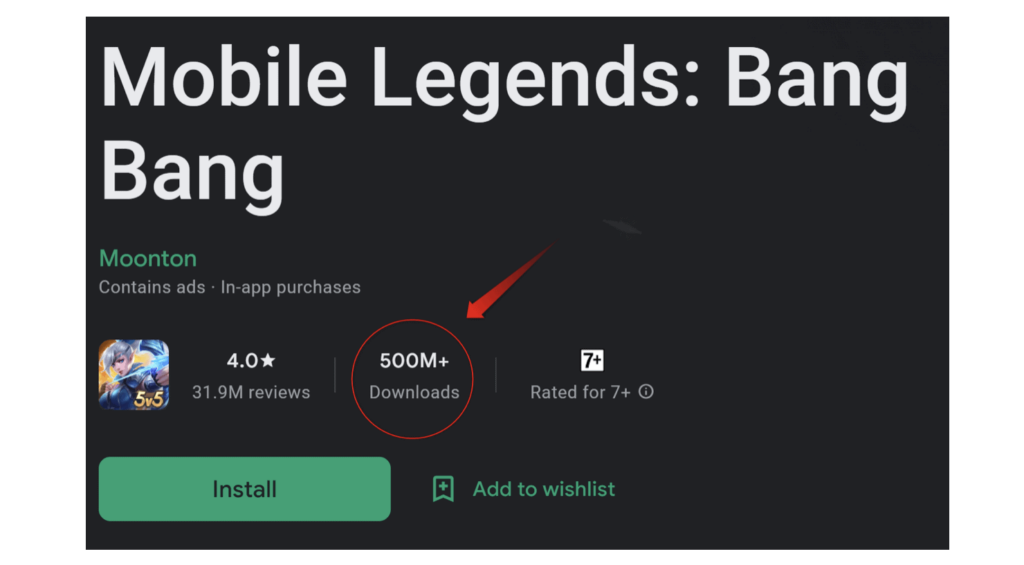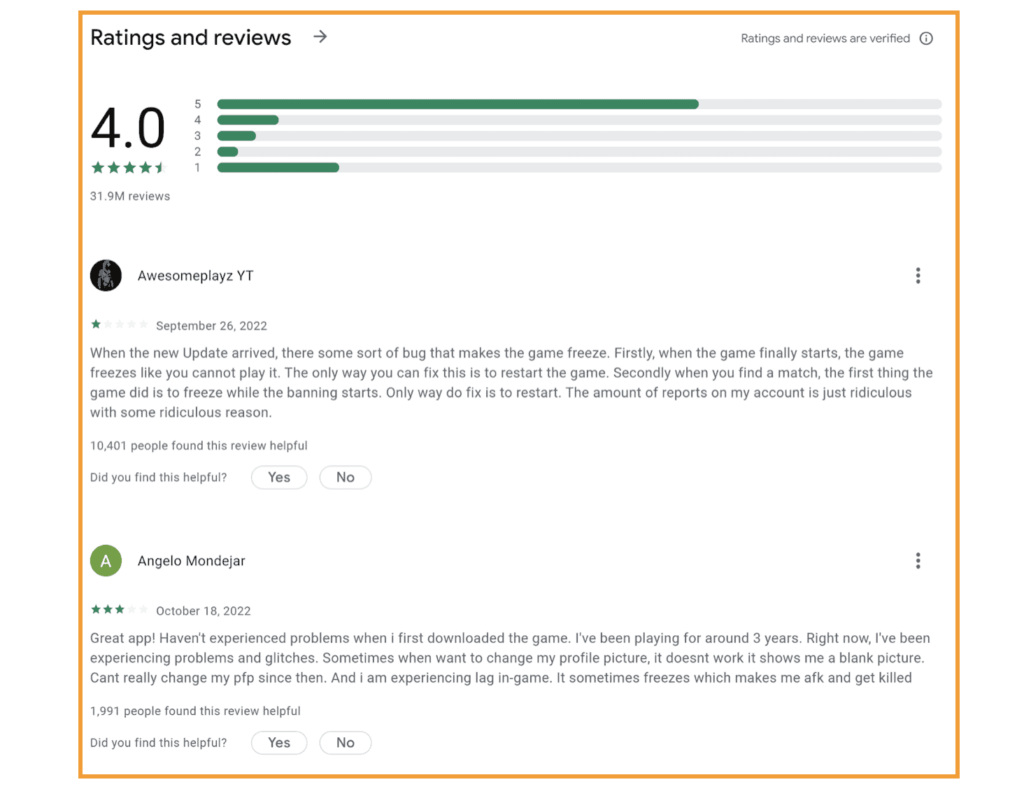
How can you optimize your mobile app? That’s one of the biggest questions many app developers have in their minds right now.
After all, it’s not enough to simply create an app. With millions of mobile games today, you need to know how to stand out, get noticed, and be on top of the list. If not, then you will surely just be a drop in the sea of mobile apps.
Image source: Unsplash
So, if you want to know how to optimize your mobile game and get more users and downloads, then you need to continue reading this post.
What is App Store Optimization (ASO) for games?
Generally speaking, App Store Optimization (ASO) for games works in the same way as the ASO for other types of mobile apps. The huge difference is that you need to consider how major app stores today categorize games.
For example, Google Play Store now separates regular apps from games as you can see here:
Image source: Google Play Store
The same is true in the Apple App Store. Before the release of iOS 11, you can see three main tabs: Categories, Features, and Top Charts. Now, these tabs include Today, Games, and Apps.
Thus, you would need special planning for game ASO campaigns to ensure you maximize your exposure in app stores.
Why is ASO important for your mobile games?
App Store Optimization (ASO) is the process of improving your app’s visibility in app stores. By choosing the right visuals, texts, and keywords, you try to help app stores to include you in search and browsing results.
So, why is ASO important for the success of your mobile games?
According to a study conducted by research firm Forrester, 63% of people found their needed app through app store searches.
So, when people search for an app, you better be there because if you don’t appear on search results, there’s a good chance you’ll never get noticed by potential users.
Imagine, there are about 478,000 games in the Google Play Store and 984,000 games in the App Store. Not only that, but if you’re going to include other mobile apps, then you’re up against millions of competitors.
That’s the main reason you need to perform App Store Optimization to stand out of the crowd.
How to find the perfect title and keywords for your game?
When it comes to ASO, the title of your game plays a major role in your visibility. For one, all app stores, including Apple App Store and Google Play Store, index your app based on your title. Aside from that, your title should instantly tell your potential users what your app is all about.
Image source: Apple App Store
Remember, people nowadays have a short attention span. They want immediate results. They look for a specific app and they want it fast.
As soon as they find their needed app, they will leave immediately. So, you don’t have the luxury of time to explain to your users how your app can help.
The strategy is to grab people’s attention in the first few seconds and lead them to your app store listing to educate them about your app. This means that your app title plays a vital role.
Here are the best tips to remember when choosing a game app title for ASO:
- The title should be easy to remember and understand.
- The title efficiently describes what the app is all about.
- The title maximizes the character limit (30 for App Store and 30 for Play Store)
Choosing the right gaming keywords
Keywords are among the most important ranking factors that app stores consider. Normally, people use keywords or phrases when searching for an app.
That’s why you need to have all the relevant and related keywords on your app listing. So when people use a relevant keyword, your app pops up in the search result.
Remember these tips when choosing ASO game keywords:
- Think of all the possible ASO keywords for your gaming app.
- Use keyword tools to come up with a list of keywords.
- Put yourself in the shoes of your users. What keywords would they use to find an app like yours?
- Use synonyms.
- Check what keywords your competitors are using.
App descriptions
On the App Store, Apple has app subtitles and app descriptions. The equivalent of these in the Play Store is the app short description and app long description. Let’s break it down quickly.
App subtitle appears under the title. It is among the most visible app store elements. As much as possible, use all the 30 available characters and include keywords.
Example of app subtitle on the App Store (Image source: Apple App Store)
For the App Store description, you don’t have to add keywords to it. So, you have more freedom in writing your description without getting bothered about where to insert keywords.
Example of app description in the App Store (Image source: Apple App Store)
Now, on the other hand, the Play Store has both the short description and long description for game apps. You can use up to 80 characters for your short description and up to 4,000 characters for your long description.
Example of app description in Play Store (Image source: Google Play)
It is crucial that you add keywords to your short and long descriptions. Google checks your descriptions for keywords when ranking your app.
Installs
App stores look into the number of your installs as a good indication that your app is doing well. The more installs that you have, the more your ranking will increase.
How downloads are displayed on Google Play Store
Now, the problem is that established gaming apps already have a lot of installs and competing against these big apps can be overwhelming.
Nevertheless, you should not lose heart. Performing ASO on a regular basis should eventually give you more installs. When users see you have a good app, it is inevitable that more and more people will notice you and that will in turn improve your installs.
Rating and reviews
A lot of people based their decision on users’ reviews and ratings. Naturally, when they see that you have great reviews and high ratings, you can easily convince them to choose your app over the others.
Aside from your ratings and reviews serving as social proof, these are also used by app stores to rank apps. The higher your rating is the higher your chance of appearing on search results and featured pages.
Example of ratings and reviews on Play Store
Obviously, to have good ratings and reviews, you need to have an awesome gaming app. You ensure it works as it is designed. You constantly update your app to prevent bugs and improve the user experience.
As much as possible, listen to your users. When they have complaints or negative reviews, respond to them and see how you can solve the problem as quickly as possible.
After all, the more you pleased your users, the higher your ratings and the more positive your reviews should be.
Optimizing your mobile game now
These are just some of the most important principles and tips you should know when it comes to improving your mobile game’s visibility and performance in the app stores.
If you want a more detailed explanation, then you need to get in touch with ShyftUp. They will not only help you learn ASO, but they will also do it for you.
If you don’t have the experience, tools, and expertise to optimize your mobile game, then ShyftUp is for you. As you consider your mobile gaming app’s marketing strategy, don’t forget how ShyftUp can make things tremendously easy for you.
How can I boost my Play Store games?
Work on your App Store Optimization strategies and run paid campaigns. You can also use ASO tools to help you adjust your strategies as needed.
What is ASO in gaming?
App Store Optimization in gaming allows app developers to get more visibility on app stores. ASO involves adding keywords to titles and descriptions, choosing the right app icons, screenshots, and previews, and improving the overall performance of the gaming app.
What are the best ASO tactics for mobile games?
Some of the best gaming ASO tactics include researching keywords, getting featured, appearing in the top charts list, improving visual assets, using impressive app previews or videos, adding regular updates, and doing market research, to name a few.

